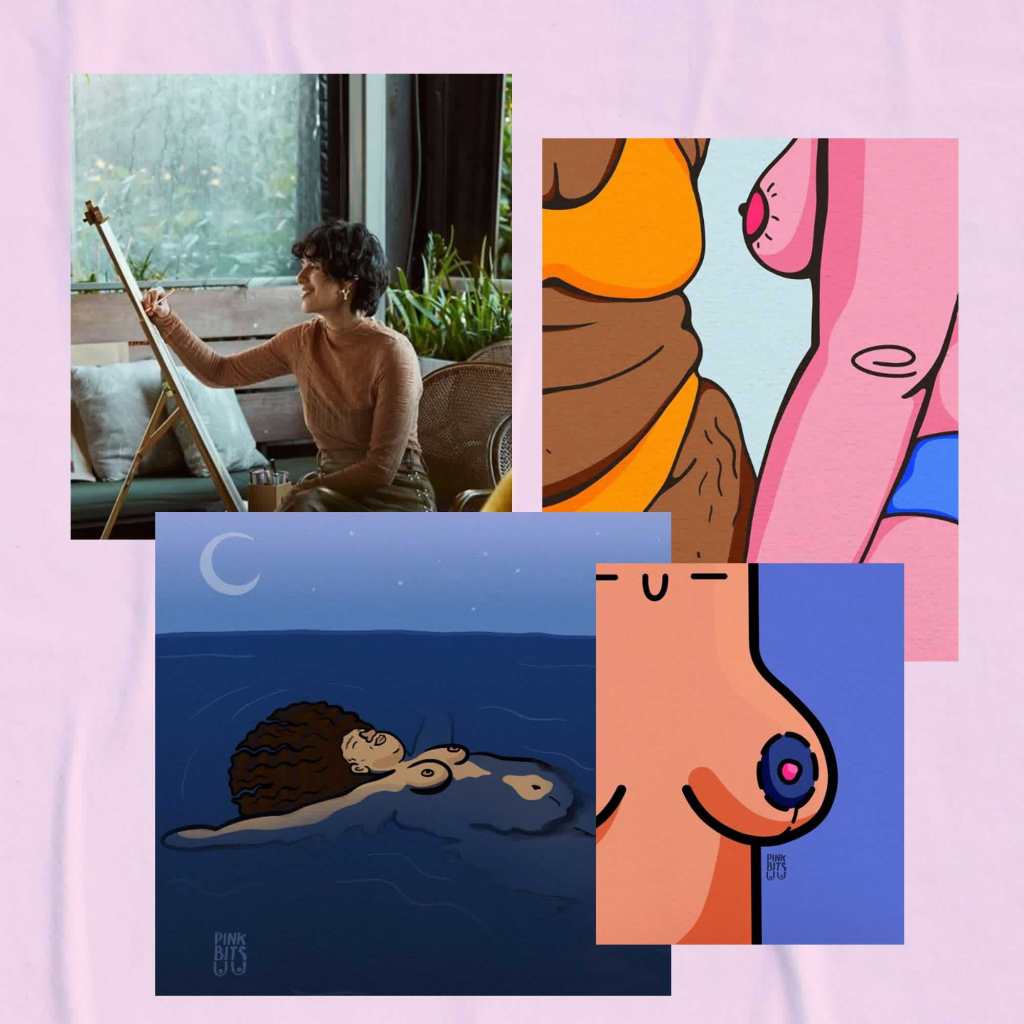By the time I was a teenager in the early 2000s, which was awash with wild diet culture and blatant fatphobia, I already had a history of body dysmorphia and various eating disorders that lasted well into my 20s.
When I sketched my first rough illustrations as Pink Bits in 2016, I saw my body and myself for the first time in a new way. My work at that time was based on my own nudes, as I had never seen artwork that represented my body nor depicted my own bodily nuances.
In these early stages of my art, I didn’t like my body very much, or at all. But eventually, I started to see it in an appreciative light. This light was powerful, and, as I drew more people, bodies, experiences and intersections, I came to understand how much so.
On a whim, I shared those early illustrations to Instagram under the name @Pink_Bits. From there, that same feeling of being seen/heard/understood was reflected back to me in the comments. So many people expressed they hadn’t seen their bodies represented in art before, and it meant so much to them to see.
The highest compliment I can get about my art sounds something like this: “Thank you for creating this illustration. I can see myself represented here,
in a way that I have never seen myself before.”
As I continued to draw with the intention of representation, Pink Bits seemed to snowball overnight. More people followed and joined a community of creativity, bodily appreciation and embracing our bodies in art. As our community grew, so did our connection, so I created The Unlearning Project, a guide to dispelling social expectations and embracing self-love.
It’s grown into a community to share your story of how you were taught cruel beliefs about yourself, how this impacted you, and what you learned in its place. We use art, design and personal stories to reclaim our bodies and share radical unlearnings.
I’ve come to learn that art and community are such powerful beings. To see yourself rendered so adoringly can be therapeutic and allow you to approach yourself through a new, unfamiliar lens.
To draw with the intention of representation and fuelling unlearning, I illustrate many segments of our human nature. This ranges from our non-physical selves such as our identity, sexuality, pleasure, mental health and feminism, to our physical selves including our bodies, body hair, skin and scars.
I’m often asked, ‘why do you draw basically everyone nude?’. I’ve always drawn with the idea that a nude body is not a lewd body. A nude body is not inherently a sexual body just because they’re undressed. It’s important we reconnect with bodies outside of objectification.
But in a simple sentence, I’m drawing the bits and shapes we’ve been told and taught to hide. What better way to represent that in a media-dense environment than the literal?
Annoyingly, Meta has over the years continuously censored my work. This restriction of connecting with my community has been very disheartening to witness. Artwork exploring sexual health, women experiencing pleasure, intimate stories, calling out hypocrisy, and sharing resources on sex, autonomy and feminism often gets me most shadow-banned. I’m convinced that as each day goes by, less of my community can access my work.
As a result, I now also showcase my work on Sunroom, an app created by women, designed for celebrating unfiltered self-expression. Showing how powerful women’s bodies are is something that should never be shadow-banned — in art or online.

